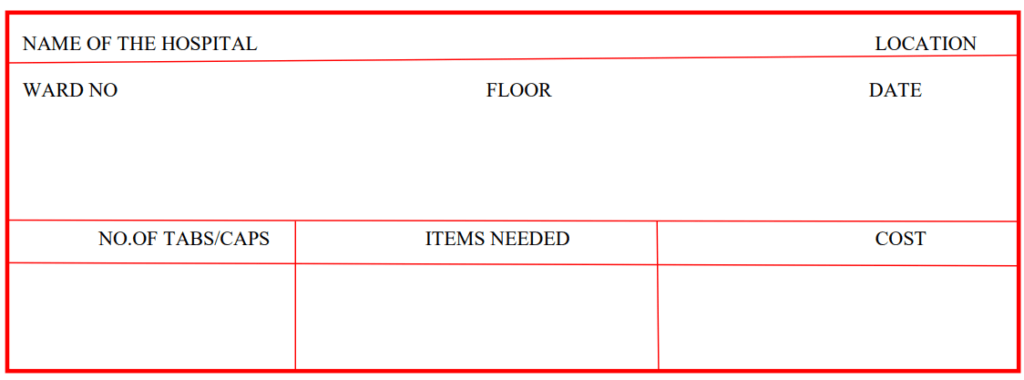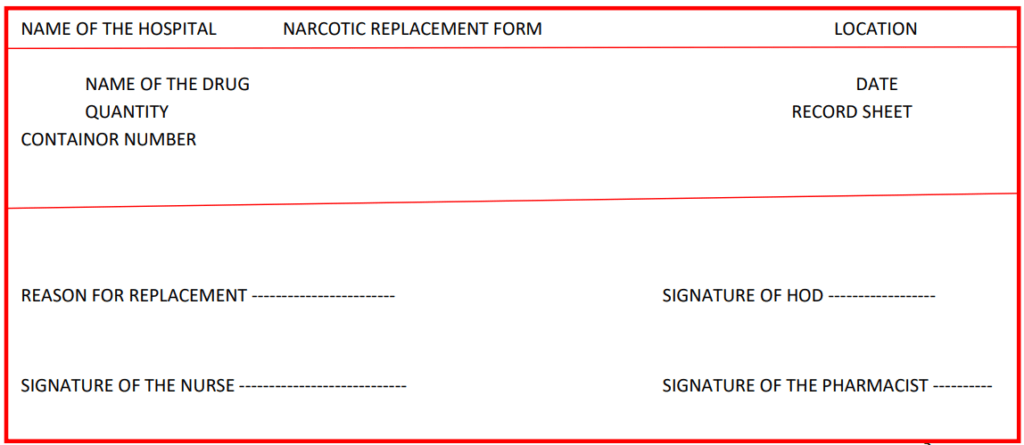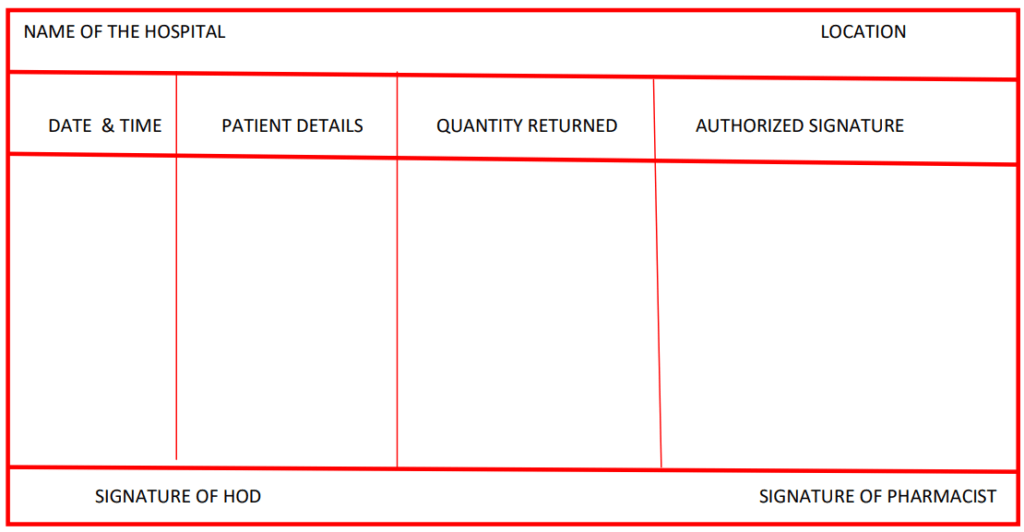Distribution of Controlled Substances in Hospital the hospital pharmacist is responsible for the proper safeguarding and handling of controlled substances within the hospital.
Table of Contents
Distribution of Controlled Substances in A Hospital
He is mainly responsible at:
- Preparation of orders of controlled substances
- Ordering ward stock controlled substances from the pharmacy
- Ordering non–ward stock controlled substances from the pharmacy
- Produce in case of waste, deterioration, or contamination of drugs
- Miscellaneous procedures.
1. Preparation of Orders Of Controlled Substances:
The orders must be written either on the doctor’s order sheet on the patient’s chart or on the hospital’s prescription papers.
Signed prescriptions must be sent to the pharmacy and issuing must be done by registered pharmacists only.
2. Ordering Ward Stock Controlled Substances from Pharmacy:
Requisition for ward-controlled substances is sent to the pharmacy along with empty containers and nursing inventory sheets.
All previous supplies of controlled drugs must be accounted for by checking controlled drug administration regularly.
Whenever a dose is lost or wasted the nurse in charge must report the incident.
3. Ordering Non-Ward Stock Controlled Substances from Pharmacy:
The drugs may be ordered from the pharmacy on written prescriptions only.
Procedures should be followed in case of waste, deterioration, or contamination of drugs.
4. Procedure In Case Of Waste, Detoriation Or Contamination Of Drugs:
The pharmacist must keep a record of an incident of what happened i.e. drug discard by expiry, deterioration, expelled, or order canceled by the doctor.
In case of accidental contamination occurs the person responsible shall indicate the loss and make the record of the incident.
5. Miscellaneous Procedures:
Use of controlled drugs is restricted to only ward patients and by permission.
Narcotic prescriptions may not be refilled without renewal of prescriptions.
Once narcotics have been dispensed from a pharmacy nursing services take the responsibility for administration.
Verbal orders should be accepted only during emergencies.
Distribution of Narcotic Substances
INTRODUCTION
According to the Drugs and Cosmetic Act, 1940 and Rules 1945 narcotics are covered under Schedule X since they are addictive. They are covered under the Narcotic & Psychotropic Substances Act 1985.
The hospitals should produce a separate license to store and sell dangerous drugs under the Dangerous Drug Act 1930.
According to this, the hospital authorities should provide proper storage facilities with a lock and key facility.
There should be a separate prescribed form to keep the records of their purchase, distribution, and sale by the pharmacist.
Dispensing In the Outpatient Department:
There should be dispensed from the outpatient pharmacy with separate prescriptions that contain
- Date
- Patients full name and address
- Name and dose of drugs prescribed
- Total amount of drugs to be dispensed
- Name and signature of the physicians
- Route and frequency of administration.
A copy should be stored and maintained for record purposes.
Dispensing In the Inpatient Department:
This is done as:
a) Ordering ward stock from the pharmacy:
The nurse writes the requisition form for ward stock narcotic substances by placing a check mark opposite the name, strength, and dosage form of substances.
The completed form is sent to the pharmacy along with empty containers and a nursing inventory substances sheet.

Whenever a dose of the drug is lost or wasted in the ward, the in-charge nurse must prepare a report to cover the incident.

Ordering Non-ward Narcotic Drugs from Pharmacy:
The drugs that are not stocked in the nursing station may be ordered from the pharmacy with full information written that includes:
- Date
- Patients full name
- Patients hospital number and address
- Name and dose of drug prescribed
- Total quantity to be dispensed
- Registration number of the physician
- Name and signature of the physician.
Control Of Narcotics In Wards By Nurses:
The whole responsibility for administration, control, and auditing of the inventory lies on nurses once they reach the wards from the pharmacy.
The nurses will sign the audit record book at the nursing station which contains information about quantity received, and quantity administered at the time of administration.
The left out is again sent back to the pharmacy with the requisition.

Make sure you also check our other amazing Article on: Drug Therapy Monitoring
